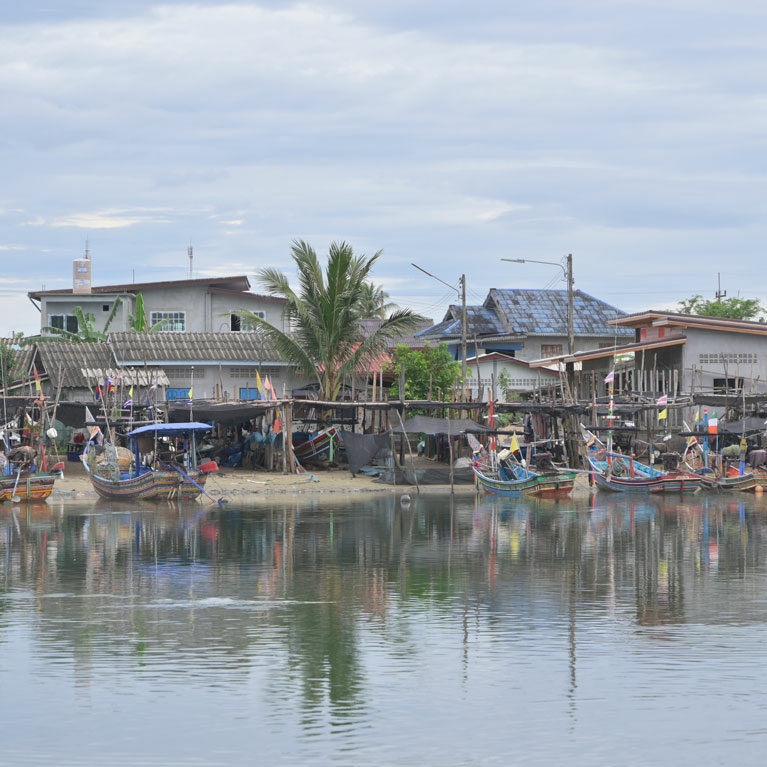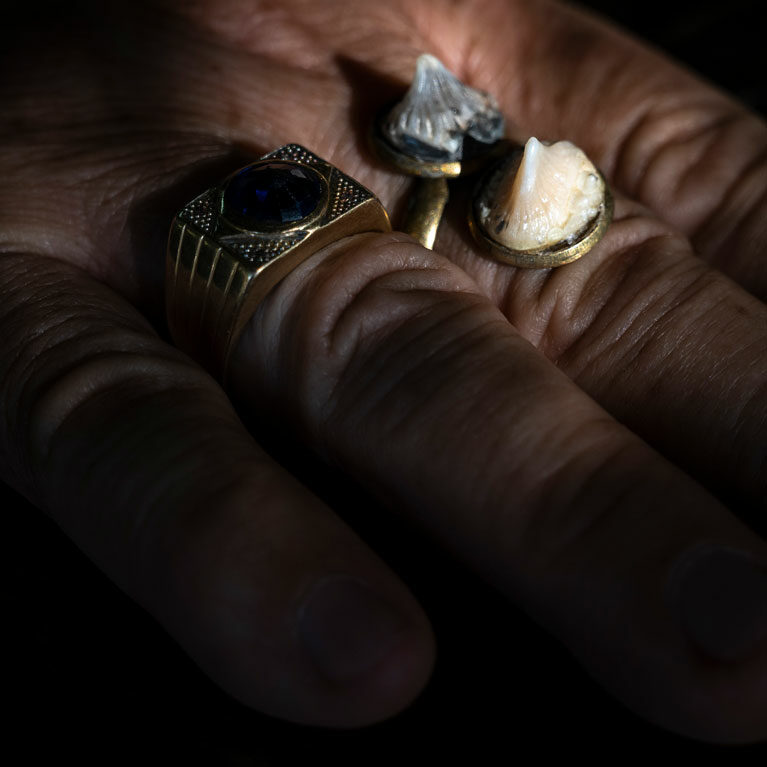Understanding the amulet trade of bowmouth guitarfish in Thailand
Jennifer’s research will start in the world’s busiest amulet market of Tha Prachan in Bangkok. From there, she’ll be tracing trade and supply chain routes through other markets and ports to glean information from local traders and fishers. Her focus is on collecting data on bowmouth products such as how much is present in the markets and what drives the trade. She hopes these data will help inform critical research and data gaps and contribute to informing trade policy, both nationally and internationally.
I spent my early childhood on the east coast of Canada, racing into the icy cold waters of the Atlantic Ocean. Whale watching was a rare excursion that my three siblings and I could all agree on. Memories of breaching whales have faded over the years, but one memory from these trips has stood the test of time: a fisher reeling in a formidable fish – a shark! Transferring to the landlocked province of Alberta removed me from the seascape, and my intellectual pursuits eventually focused on law and policy. After completing a BA in international relations, I worked as...



Understanding the amulet trade of bowmouth guitarfish in Thailand
The overall aim is to characterize the physical bowmouth amulet trade and understand the relationship between products and people in Thailand to inform management, enforcement, and CITES.
The bowmouth guitarfish is a Critically Endangered and CITES listed ray. Their numbers have undergone severe declines, and though protected in Thailand, this is where their characteristic large thorns are found made into jewellery and traded for “protective powers”. The market for their thorns has been unresearched and unquantified, but quantifying their volume and value can provide a low-cost method to inform management and policy recommendations.
The unsustainable trade of elasmobranchs (sharks and rays) is contributing to their drastic declines, yet very little attention outside the trade of fins and meat is given any attention. Wedgefishes are one of the most threatened families of marine fishes and all known species were CITES Appendix II listed in late 2019. Bowmouth are without species-specific management plans and are in need of data to inform conservation measures. Occuring in coastal waters, around coral reefs and on the continental shelf, bowmouth have very low productivity (about 2-11 pups per litter) with very little known of their life history or population status over time. They are caught through targeted and incidental catch and retained for their high-quality meat and high value fins. Indeed, bowmouth fins fetch among the highest value in the fin trade. Monitoring trade volumes of shark and ray products can act as a proxy for landings data and fill critical data gaps that can be difficult to otherwise difficult to obtain. The trade of elasmobranch fins is well established but gathering species specific information is difficult, costly, and time consuming. Research of the elasmobranch curios trade is lacking and in the case of the bowmouth, non-existent. Results from my initial bowmouth research clearly demonstrates an online demand and market for bowmouth thorns. The work here funded by Save our Seas Foundation will quantify the physical dimension of trade in bowmouth products in Thailand. Additionally, I will investigate the socio-economic drivers of thorn trade specifically with reference to existing Thai enforcement and management. My proposed outputs will provide concrete evidence of direct relevance to the conservation of this endangered species, specifically critical non-detriment findings that are currently unavailable for bowmouth in Thailand (and most of its range states).
- Market surveys will be conducted to characterize and quantify the availability of bowmouth products (specifically thorns).
- Key informant interviews will be used to determine the motivations behind purchase. Insight into product supply chain (e.g. are products crossing borders) will be investigated, as well as an assessment of local knowledge of the conservation and legal status of bowmouth.
- The facilitation of a participatory workshop between key stakeholders will follow the interviews and surveys. Collaboration will point to potential enforcement gaps, opportunities for in-country support and strategies will be developed to inform customs training, including documents featuring common products derived from bowmouth.

